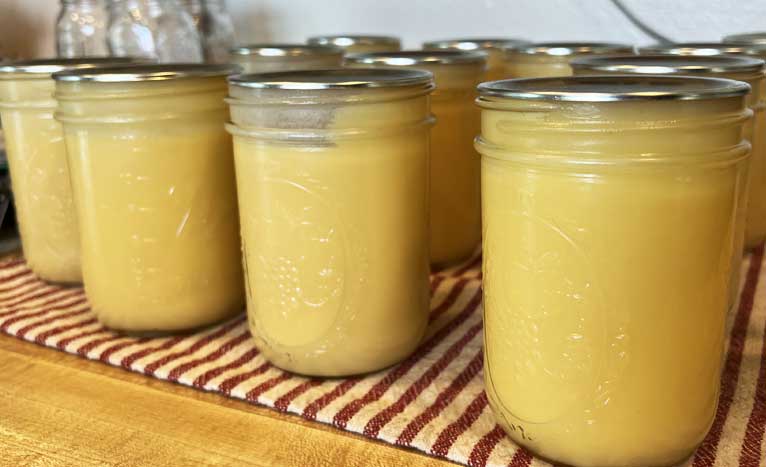The Ultimate Guide to Homemade Mason Jar Butter
Making your own butter at home is a surprisingly simple and rewarding experience. This guide will walk you through the process of creating fresh, creamy butter in a mason jar, offering a delightful DIY project and a taste of pure, unadulterated flavor. Say goodbye to store-bought butter and hello to a culinary adventure!
Ingredients and Tools for Homemade Butter
Before you begin, gather the following:
- Heavy Cream: The star of the show! Opt for high-quality heavy cream for the richest, most flavorful butter.
- Salt: A pinch of salt enhances the natural sweetness of the cream. Sea salt or kosher salt are excellent choices. (Optional)
- Mason Jar with Lid: A sturdy mason jar with a tight-fitting lid is crucial for this recipe. It prevents spills and ensures efficient churning.
Step-by-Step Butter Making Instructions
Pour the Cream: Fill the mason jar approximately halfway with heavy cream. Leaving ample space is essential for the churning process.
Add Salt (Optional): If desired, add a pinch of salt to the cream. This enhances the flavor and creates a more balanced taste.
Seal the Jar: Secure the lid tightly onto the mason jar. Double-check that it’s properly sealed to avoid any leaks during shaking.
Shake Vigorously: Now for the fun part! Shake the jar vigorously for about 10 minutes. Initially, you’ll hear the cream sloshing around. As you continue shaking, it will thicken into whipped cream, eventually transforming into a solid mass.
Listen for the Change: After about 10 minutes, the sound will change from a sloshing to a thudding noise. This indicates that the butter is forming and separating from the buttermilk.
Separate the Buttermilk: Carefully open the jar and pour the liquid (buttermilk) into a separate bowl. Don’t discard this precious byproduct! Buttermilk can be used in various recipes like pancakes, biscuits, and even salad dressings.
Shape the Butter: Scoop the butter out of the jar and gently form it into a ball or desired shape using your hands. This helps ensure a smooth and consistent texture.
Rinse the Butter: Rinse the butter under cold running water, kneading it gently until the water runs clear. This crucial step removes any remaining buttermilk, which prolongs the butter’s shelf life.
Store Your Butter: Place the finished butter in an airtight container or wrap it tightly in parchment paper. Store it in the refrigerator, where it will stay fresh for up to two weeks.
Why Make Your Own Butter?
- Superior Freshness and Flavor: Homemade butter boasts an unparalleled freshness and flavor that surpasses store-bought alternatives.
- No Additives or Preservatives: Enjoy pure, wholesome butter free from any artificial ingredients.
- Cost-Effective: Making butter at home can be a budget-friendly way to use excess heavy cream.
- Fun and Engaging: The process is an enjoyable DIY kitchen project, perfect for involving kids in cooking.
Tips for Perfect Homemade Butter
- Cold Cream is Key: Use cold heavy cream for a smoother and creamier butter texture.
- Consistent Shaking: Maintain a consistent and vigorous shaking motion to expedite the churning process.
- Sweet Butter Variation: For a sweet treat, omit the salt and mix in honey or maple syrup after forming the butter.
- Flavor Infusions: Get creative! Add fresh herbs, minced garlic, or lemon zest to create flavorful compound butters.
Frequently Asked Questions (FAQs)
Can I use a different container? While a mason jar is ideal due to its secure lid and durability, other sturdy containers with tight-fitting lids can be used.
How do I know when the butter is ready? The change in sound from sloshing to thudding, along with the visible separation of buttermilk and the formation of a solid mass, indicates that the butter is ready.
What can I do with leftover buttermilk? Buttermilk is a versatile ingredient! Use it in baking recipes, marinades, smoothies, or enjoy it on its own.
Delicious Variations to Explore
- Garlic Herb Butter: Combine minced garlic and chopped fresh herbs like parsley or thyme for a savory spread.
- Sweet Cinnamon Butter: Add a touch of cinnamon and sugar for a delightful topping for toast, pancakes, or waffles.
The Joy of Homemade Butter
Making butter in a mason jar is more than just a recipe; it’s a connection to traditional culinary practices and a rewarding experience. The taste of freshly churned butter is truly exceptional, and once you’ve tried it, you’ll likely never go back to store-bought butter again. Enjoy the journey and savor the delicious results!
